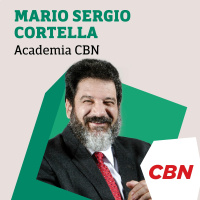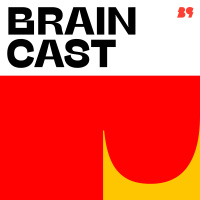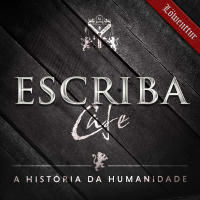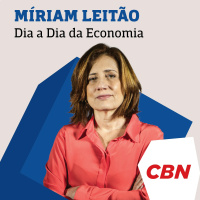Sinopsis
This show targets an audience interested in archaeology. It explores myths surrounding this exotic, often misunderstood field and acquaints listeners with the contemporary practice of unearthing the human past. Themes range from Dr. Schuldenrein’s own “Indiana Jones”-like adventures in the land of the Bible to his team’s archaeological forensics effort to unearth Kurdish mass graves in Iraq. That undertaking helped convict Saddam Hussein in 2006. Topical issues contribute to the evolution vs. creationism controversy based on updated fossil records and innovative DNA studies. An episode highlights the main funding source for archaeology in the U.S. (Hint: the oil and gas industry). Experts reveal the latest high-tech approaches to buried archaeological landscapes that provide clues to understanding climate change, past, present and future. Indiana Jones: Myth, Reality and 21st Century Archaeology is broadcast live every Wednesday at 3 PM Pacific Time on the VoiceAmerica Variety Channel
Episodios
-
Archaeology in NYC: Inside the Foley Sq and Peck Slip Projects
22/02/2012 Duración: 54minIn this episode, Dr. Schuldrenrein investigates the process of archaeological compliance in New York City by going behind the scenes of the Foley Square and Peck Slip projects in Lower Manhattan. Joining him are Deputy Commissioner for the NYC Department of Design and Construction Tom Foley, Archaeologist and President of Chrysalis Archaeological Consultants Alyssa Loorya, and Director of Archaeology at the NYC Landmarks Preservation Commission Amanda Sutphin. All three of these people play integral roles in archaeological assessment and planning in the city. Tune in to learn how and why New York City is considered to be at the forefront of archaeological project integration and compliance in the nation.
-
Audience Questionnaire: Public Interest in Archaeology
15/02/2012 Duración: 58minThis week’s show is a follow up to the previous episode wherein we reached out to the audience to address the topics that they thought were most intriguing and provocative. This week we generated a questionnaire, which offered up rather interesting and even unexpected results. This questionnaire will also serve as a guideline to generate topics of discussion for future episodes. We hope to address not only what are considered “professional interests” in archaeology, but also to encourage the dialogue between professionals, enthusiasts of the field and a general public, which has, at best, only a passing connection to archaeology.
-
Question and Answer Session with the Audience
08/02/2012 Duración: 51minArchaeology is viewed as an esoteric pursuit by (professional) academics and a broad range of field enthusiasts and antiquities buffs. Professional archaeologists are so accustomed to speaking amongst themselves that they are uncomfortable discoursing on key professional issues. They remain challenged in communicating their message to the general public. Our canvassing of the listenership suggests that the communication gap between professionals and the public only seems to grow bigger. This week we attempt to address archaeological questions of “message”, “relevance”, and even “interest to our listenership. Our program and others are mobilizing social media outlets to find out what interests our audience have and how they view the field of archaeology. We recorded a number of very provocative and intriguing questions from our audience. Host Dr. J. Schuldenrein attempts to summarize the results of our very informal listener-feedback sample on this week's show.
-
Archaeology and JPAC's Mission to Repatriate Military Combat Victims
01/02/2012 Duración: 54minHave you ever wondered how the criminologists popularized in such TV shows as “CSI” developed their investigative techniques and deductive strategies? Many of their methods and approaches are derived from archaeological science. The emergence of forensic anthropology and archaeology is largely traceable to the efforts of the American military in recovering the remains and establishing the identities of missing soldiers (MIA’s) during the Vietnam war in the 1970’s. This week’s episode introduces the nuts and bolts of forensic archaeology through the mission of the Joint POW/MIA Accounting Command (JPAC). JPAC is a military command dedicated to repatriating the remains of soldiers lost in our nation’s past conflicts. Join the discussion with the Deputy Director of the JPAC, Dr. William Belcher, who recounts the history of this unique military operation. Learn how forensic recovery operations are conducted in some of the most remote corners of the world.
-
Afghanistan's Cultural Heritage Under Siege: Preservation and Patrimony in Wartime
25/01/2012 Duración: 56minPreservation of cultural heritage is one of the main concerns for nations worldwide. Yet, the maintenance and promotion of cultural patrimony poses unique concerns in areas of war and conflict. More specifically, monuments and sites symbolizing cultural heritage are often at the core of conflicts in nations embroiled in ethnic or religion-based transitions in hegemony. Afghanistan currently embodies a national struggle for identity as various groups struggle for power and dominance. The most visible aspect of cultures in conflict is their grand architecture and monuments attesting to the historic passage from Buddhism to Islam. The destruction of the Buddhist statuary at Bamyan by the Taliban in March 2001 arguably precipitated the cycle of war in Iraq and Afghanistan. Join our discussion with Omar Sultan, former Deputy Minister of Culture in Afghanistan, and Dr. Laura Tedesco, current Cultural Heritage Resource Manager for the US State Department for Afghanistan.
-
Amelia's Bones: Contemporary Archaeology and the Search for Amelia Earhart, America's First Aviatrix
11/01/2012 Duración: 58minWhat is the connection between archaeology and aviation technologies? How can archaeology be applied to the field of aviation forensics? This week’s episode examines the most recent findings of ongoing and long-standing research to solve the historically captivating mystery of Amelia Earhart’s disappearance over the Pacific in 1937. The quest to reconstruct the final days of Earhart’s life and to establish the chronology of her and her partner’s probable short-term survival and eventual tragic fate is the subject of an enduring, privately funded research campaign. Find out how archaeology contributes to an inter-disciplinary effort in which the possible material evidence of Earhart’s existence on a Pacific Island is linked to possible remains of the airplane’s wreckage as suggested by old photographs and more sophisticated digital and remote sensing imagery. Well-known archaeologist Dr. Thomas King provides updates on the recent work in the vicinity of the crash site.
-
Reflections on an Archaeological Career: Looking Backward, Moving Forward
04/01/2012 Duración: 56minWhat does it take to become an archaeologist? What is it that archaeologists do? And why is it important? These questions are posed not only by the greater public, but also by archaeological practitioners and students. Our host tracks how the archaeological profession has changed over time and assesses prospects for its future development. Archaeology has undergone over the past quarter of a century substantial changes of theories of cultural change and practical methods of archaeological discovery. The field has become increasingly more scientific and technical. It has also transitioned from a largely academic pursuit to a more practical vocation that extends into the regulatory environment and the world of business. Finally, we stress the need to communicate the message of archaeology, its significance and relevance, to the general public. The need for public support is factoring into the ability of archaeology to sustain itself as a profession in the 21st Century.
-
Early Peopling of the West Coast of North America: New Perspectives
14/12/2011 Duración: 58minThis episode expands our discussion of the Early Peopling of the North America to the West Coast. When did people first appear in the region? How did climates and environments diverge from the present? How did early peoples adapt to nearshore and interior environments and when did these landscapes change? Answers to these questions have broad implications for understanding the human ecological dynamic in the present age of sustainability. Late glacial and post-glacial events along the Pacific margins diverge significantly from those discussed earlier for the East Coast. Patterns of deglaciation, tectonics, and climate change resulted in surfaces that were significantly different, but can still be reconstructed with increasing accuracy with new geoarchaeological methods. We discuss these reconstructions and theories with guests Dr. Loren Davis and Dr. Matthew Des Lauriers, renowned West Coast researchers and Ms. Amy Gusick, PhD candidate at the University of California, Santa Barbara.
-
Mystery, Intrigue and Science: Recent Developments in the Interpretations of the Dead Sea Scrolls
07/12/2011 Duración: 50minOver 60 years ago a Bedouin boy had made a remarkable discovery in the caves of Qumran that captivated the imagination and curiosity of people around the world ever since. The Dead Sea Scrolls changed our perception of the Bible, shed light on life during the biblical times, and opened a unique window into the spiritual world at the time of the Second Temple. What is the historical and cultural significance of these documents and how have interpretations changed since they have been made available to scholars and broader audiences? A new exhibit at the Discovery Center in mid-town Manhattan gives renewed life to these rarest and oldest manuscripts. Be a part of our discussion of these exceptional artifacts with Dr. Lawrence Schiffman, one of the world’s foremost experts on the Dead Sea Scrolls. Dr. Schiffman explains how interpretations have evolved, in part as a result of the increasing exposure of the scrolls to a new generation of scholars.
-
Profiles in Contemporary Archaeological Careers: A Life in Geoarchaeology
30/11/2011 Duración: 57minCareer paths in all professions reflect adjustments to changing times and conditions. Archaeology is no different. In this episode we look at how archaeological training and vocational directions have shifted in a world centered on practical adaptation. Two synchronous trends in the archaeological career pathway are explored. First, specialization is now pivotal to career advancement. For archaeologists specialization is not so much regional as it is methodological. In other words, certain technical skills are in growing demand for archaeological employment. Second, venues for practicing archaeology have shifted from the academic to the applied stage, as preservation planning, heritage management, and government regulation afford greater employment opportunities. Our guest, Dr. Curt Larsen, combined a specialty in geoarchaeology across an evolving employment landscape to fashion a distinguished career. He chronicles his own professional history as a sign of the times.
-
Thanksgiving Special: The Archaeology of Ancient Diets and Environments
23/11/2011 Duración: 54minThanksgiving calls to mind a series of foods whose origins are assumed to be uniquely North American or European. In addition to the turkey, native to North America but domesticated in Europe, the balance of the traditional Thanksgiving diet consists of roots, berries, and plant foods whose origins are as exotic as they are diverse. Archaeology provides insights into former diets and environments because the remains of foods and plants are often preserved at ancient sites. They include burnt seeds, fossil grasses, and ancient pollen (yes, the kind that cause spring sneezing!). Their presence is readily detectable on ancient house floors and within sediments that often contain plant matter indicative of former vegetation and climates. One of the best dietary indicators is fossilized human waste that preserves a wide range of ingested foodstuffs. Our guest is Dr. Linda Scott-Cummings a recognized authority in reconstructing natural vegetation histories and ancient human dietary patterns.
-
The Impact of Women in Contemporary Archaeology
16/11/2011 Duración: 56minAs in many other professions, the proportion of women entering the field of archaeology has increased substantially since the latter 20th century. Some statistics indicate that their numbers have actually exceeded those of their male counterparts in several areas, specifically in college enrollments and graduate programs. Is this changing demographic reflected in the archaeological hierarchy, specifically in numbers of senior professors, in decision-making roles in governmental agencies, and in the ownership and management roles at cultural resource companies? Those data yield more equivocal results and point to slower rates of change in the upper tiers of archaeological organizations and professional influence. While the arrow is generally pointing upwards, old stereotypes tend to die hard. This program debates the evolving status and roles of women in archaeology with two leading representatives in the university and private sectors.
-
Archaeology and the Private Sector
09/11/2011 Duración: 56minThe overwhelming majority of archaeological work in the United States is performed under the umbrella of Cultural Resource Management. The term refers to the legal basis mandating historic preservation and the steps undertaken for regulatory compliance. Our program documents the emergence of compliance archaeology from the perspective of professionals who work as consultants in the private sector. We examine how private companies grew in conjunction with the florescence of the preservation ethic. Our guests are pioneers in the field, the first wave of entrepreneurs who matched their professional skills with business principles to form companies now at the forefront of the industry. We explore the industry’s early years, its direction, and why the education of future archaeologists must be oriented to conform to the needs of an increasingly commercial profession that requires business and communication skills as much as expertise in archaeology and scientific inquiry.
-
Archaeology and the Law: A Current Assessment
02/11/2011 Duración: 56minArchaeology was typically viewed as an academic, often esoteric pursuit until the latter 20th century. The emergence of the environmental movement of the late 1960’s and ‘70’s gave rise to a preservation ethic that targeted cultural as well as natural resources in response to accelerated natural resource exploitation and land development. Prehistoric and historic archaeological sites as well as historic buildings and monuments were now classified cultural resources in North America or heritage sites elsewhere in the world. Over the past half century legislation has been in force to mitigate the effects of development on these irreplaceable vestiges of ancient cultures. This program examines the backdrop to preservation law and the evolution of cultural resource practice in response to changing political and economic realities. Our guests are nationally respected authorities who helped fashion the law and are active in applying its principles in classic as well as controversial cases.
-
The Veterans Curation Project: Rehabilitation by Archaeology
26/10/2011 Duración: 56minThis first decade of the 21st century has witnessed two major wars resulting in serious injuries to numerous American soldiers. Returning veterans have come home to a depressed economy and uncertain futures. They confront job markets often out of reach to those with skills not readily transferable to the civilian world. As part of the American Recovery and Repatriation Act (ARRA) the Obama administration allocated funds to rehabilitate veterans by teaching them to curate artifact collections, stored in dusty facilities for decades. The project was initiated and administered by the U.S. Army Corps of Engineers (St. Louis District) who merged veterans’ rehabilitation with curation of archaeological collections, considered to be a pivotal part of our nation’s patrimony. In this episode we discuss the emergence and achievements of this program with the archaeologists who initiated and administered it as well as with the program directors and veterans who have contributed to its success.
-
Who Were the First Americans? The Latest Theories and Evidence
19/10/2011 Duración: 57minArchaeologists and scientists have been fascinated with human migrations to the New World since the early-mid 20th century discoveries at Clovis and Folsom (New Mexico) and somewhat later findings at Cueva Fell in Chile and elsewhere in South America. These sites gave rise to what is known as Paleoindian research and were taken as evidence for earliest human arrivals because of broad distributions of a limited, but elegant group of spear point types. Many sites were associated with the slaughter and meat processing of now extinct mammals such as mammoths and mastodons. Until relatively recently, Clovis and Folsom were considered the oldest New World cultures. However, recent advances in DNA testing, ancient climate reconstructions, radiometric dating, and diverse artifact types call into question traditional models of human migrations to the New World. This episode discusses the state of research in “early American migration theory” with two of the topic’s best-known exponents.
-
The Story of Cahokia: America’s First City
12/10/2011 Duración: 58minBefore Europeans arrived on the North American continent, the central Mississippi River Valley formed the core of an extensive prehistoric urban network. Villages and cities flourished in the Midwest and Southeast U.S., extending north to Canada and south to the Gulf of Mexico. The Native Americans built extensive ceremonial and burial mounds that rivaled the cities of the Incas and Aztecs. Their culture, known as the Mississippian, thrived in urban complexes where archaeological research has unearthed the evidence of a complex agrarian society with unique funerary practices and a sophisticated socio-economic structure. Monks Mound rises 70 ft. above the Mississippi River floodplain in East St. Louis, Illinois and stands as a testament to those whose civilization remains as enigmatic as it is monumental. In this episode, we explore the foundations of the Mississippian culture, its rise, florescence and eventual demise in the wake of the Euroamerican conquest of the Americas.
-
Beneath These Mean Streets: The Practice of Archaeology in New York City
05/10/2011 Duración: 56minNew York City is considered the cultural and commercial capital of North America. Was it always this way? How did the city evolve into such an active hub where diverse peoples and cultures mixed and mingled to produce this dynamic metropolis? This episode explores the practice of “urban archaeology”, documenting the city’s emergence from prehistoric times (15,000 years ago) through the period of Euroamerican contact (commonly A.D.1492), and on to the present. We discuss the history of local archaeological practice and the novel applications of archival research and scientific techniques to “dig” in the complex maze of subsurface utilities and structures beneath city streets. We learn how historic preservation law accommodates protection of cultural resources from development interests. Some of the more recent finds and projects are discussed with professionals from private and university archaeologicalsectors, as well as the regulatory agencies that oversee this work.
-
Yin-Yang and the Amazing Archaeology of the American Southwest
28/09/2011 Duración: 56minIn this episode we explore the most spectacular archaeological region in the United States, the Southwest. Sites like Mesa Verde and Chaco Canyon are international monuments. But this vast area’s archaeological richness tells a much more complex story. Native societies in southern Arizona built enormous canal irrigation systems as early as 1200 BCE. 11th century artists of New Mexico’s Mimbres region painted brilliant ceramic pots that grace museum collections everywhere. Southwest sites have been excavated since the late 1800s, with scientists and the public benefiting from favorably dry preservation environments, largely unaltered landscapes, and the living descendants of prehistoric societies that have occupied this terrain for over 10,000 years. Renowned experts Steve Lekson (University of Colorado) and Cory Breternitz (Paleowest Archaeology, Inc.) join us in discussing the latest findings at famous Southwestern sites and their importance for archaeological research everywhere.
-
Indy’s Footprint: Archaeology, Religion, and the Material Foundations of Western Civilization
21/09/2011 Duración: 54minOur inaugural episode examines the enduring popularity of the Indiana Jones films and their impact in elevating archaeology’s image over 30 years. While the films exemplify tongue and cheek genre, many fans are convinced that the adventures are grounded in reality. Was Indiana Jones a real person? Was he a composite of several famous archaeologists? A central theme in the films is the quest for material clues that legitimize the Bible, historic accounts of classic western civilization (Greece, Persia, and Rome), and the epigraphy of the prehispanic New World. Can we prove the existence of the Patriarchs? Noah’s ark? What about the search for Atlantis? Is there an archaeological basis for the Battle of Armageddon? More generally, can archaeology confirm or refute ancient texts and the mystique surrounding oral accounts? We explore these questions and more with special guest Dr. Eric Cline, Associate Professor of Classics, Anthropology, and History at George Washington University.














